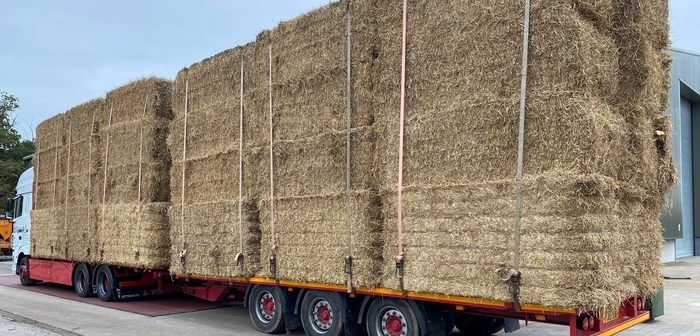Feeding a straw or wholecrop-based ration could be a cost-effective solution to the drought-induced forage shortage, says Mole Valley Farmers’ senior nutritionist Dr Robin Hawkey.
According to Dr Hawkey, straw and wholecrop are good forage replacers for livestock, when supplemented with the correct protein level. Especially as a cost-effective solution, with straw prices remaining relatively low.
Dr Hawkey advises dairy farmers to prioritise quality silage for the milking herd and use straw or wholecrop-based rations for the remaining stock.
“If you don’t feed your dry cows adequately, this is particularly bad news, as when a dry cow starts to lose weight, they can go into a negative energy balance. In a close-up dry cow, this could predispose her to metabolic diseases when she calves,” he said.
“Straw-based rations need to be carefully balanced in terms of protein, specifically rumen degradable protein, often supplied by compounds and blends including rapeseed and feed grade urea; molassed-based products such as Regumaize and Nutrimaize also contain urea but have the additional benefit of sugar, which helps support energy supply.”
“Adequate mineral and vitamin provision needs to be considered. In particular, checking straw for its mineral content will be crucial for dry cow diets and biotin is recommended for heifers.”
Dr Hawkey concludes: “It’s important that silage stocks are measured at an early stage, as relatively small actions taken now can have a big impact over the next winter. With increasing milk prices, farmers must not lose this opportunity to maintain output, but it’s vital not to compromise dry cows and heifers by not feeding them adequately.”




